#Aerobicexercise
Text

Perfect for an aerobic workout! Goldens' Cast Iron Dumbbells!
https://www.goldenscastiron.com/cast-iron-dumbbells/
0 notes
Text

Unleash Your Fitness Potential with Aerobic Step Risers
Are you ready to elevate your workout routine and take your exercise game to new heights? Meet your new best friend in the fitness world – an aerobic step riser!
0 notes
Link
Get ready to sweat it out and reach your #FitnessGoals with Aerobic Exercise! 🏋️♀️ Join us as we jump, dance, and groove our way to a healthier, fitter you. Let's move together! 💃🔥 #AerobicExercise #HealthyLifestyle
0 notes
Text
Cardio Fitness: What it is and Why it is Important
Cardio fitness, also known as cardiovascular fitness, refers to the ability of the heart, lungs, and blood vessels to deliver oxygen-rich blood to working muscles during physical activity. It is a vital component of overall fitness and plays a crucial role in maintaining good health. In this article, we will explore what cardio fitness is, why it is essential, and how you can improve and maintain it.
It primarily focuses on activities that increase the heart rate and engage large muscle groups, such as running, cycling, swimming, and dancing. Read More...
#CardioWorkouts#FitnessJourney#HealthyLifestyle#GetFit#WeightLossTips#WorkoutMotivation#HighIntensityIntervalTraining#CardiovascularHealth#AerobicExercise#CalorieBurn#HeartHealth#EnduranceTraining#FitLife#ExerciseRoutine#FatBurning#FitnessGoals#HealthyHeart#SweatItOut#FitnessInspiration#StayActive
0 notes
Link
#12-3-30workout#Activelifestyle#Aerobicexercise#Bodytransformation#Calorieburning#Cardioworkout#Cardiovascularhealth#Endurancetraining#Exerciseconsistency#Exercisemotivation#Exerciseregimen#Fitnessaccountability#Fitnesschallenges#Fitnesscommunity#Fitnessgoals#Fitnessinfluencer#Fitnessinspiration#Fitnessjourney#Fitnessmotivation#Fitnessprogress#Fitnessroutine#Fitnesstips#Fitnesstracker#Full-bodyworkout#Healthandwellness#Hearthealth#HIIT(High-IntensityIntervalTraining)#Homeworkout#Inclinewalking#Indoorexercise
0 notes
Text
The Key to Lasting Weight Loss: A Balanced Diet and Exercise

The Key to Lasting Weight Loss: A Balanced Diet and Exercise
Introduction
Losing weight can be a challenging task, but it's essential to take a balanced approach. While there are several fad diets and workout trends that promise quick results, the key to lasting weight loss is a combination of a balanced diet and exercise. In this article, we'll explore the benefits of a balanced diet and exercise for weight loss and provide practical tips to help you achieve your goals.
The Importance of a Balanced Diet
A balanced diet is crucial for maintaining a healthy weight. When you consume a diet that is high in processed foods and refined sugars, you are more likely to gain weight. These foods are often high in calories and low in essential nutrients, leaving you feeling hungry and unsatisfied.
Understanding Macronutrients
Macronutrients are the three essential nutrients that provide energy to the body: carbohydrates, proteins, and fats. A balanced diet should contain a healthy mix of all three macronutrients. Consuming too much of one macronutrient can lead to weight gain.
The Role of Fiber
Fiber is an essential component of a balanced diet. It helps keep you feeling full and satisfied, which can prevent overeating. Foods that are high in fiber, such as fruits, vegetables, and whole grains, should be a staple in your diet.
The Importance of Hydration
Drinking enough water is also crucial for weight loss. When you are dehydrated, your body may mistake thirst for hunger, leading you to overeat. Drinking water before meals can also help you consume fewer calories.
The Benefits of Exercise for Weight Loss
Exercise is just as important as a balanced diet for weight loss. When you exercise, you burn calories and build muscle, which can help increase your metabolism.
The Role of Cardiovascular Exercise
Cardiovascular exercise, such as running, swimming, or cycling, is excellent for burning calories and improving heart health. Aim for at least 150 minutes of moderate-intensity exercise per week to reap the benefits.
The Importance of Strength Training
Strength training, such as weightlifting or bodyweight exercises, is also essential for weight loss. When you build muscle, your body burns more calories at rest, helping you lose weight even when you're not exercising.
Practical Tips for Lasting Weight Loss
To achieve lasting weight loss, you need to make sustainable lifestyle changes. Here are some practical tips to help you get started:
Set Realistic Goals
Setting realistic goals can help you stay motivated and track your progress. Aim to lose 1-2 pounds per week, which is a healthy and sustainable rate of weight loss.
Keep a Food Diary
Keeping a food diary can help you track your calorie intake and identify areas where you can make healthier choices. There are several apps and websites that can help you track your food intake, making it easier to stay on track.
Find an Exercise Routine You Enjoy
Exercise shouldn't feel like a chore. Find an exercise routine that you enjoy, whether it's dancing, yoga, or weightlifting. When you enjoy your workout, you're more likely to stick with it.
Get Support
Getting support from friends, family, or a support group can make a significant difference in your weight loss journey. Having someone to hold you accountable and celebrate your successes can help you stay motivated.
Conclusion
A balanced diet and exercise are the keys to lasting weight loss. By consuming a healthy mix of macronutrients, increasing your fiber intake, staying hydrated, and engaging in regular exercise, you can achieve your weight loss goals. Remember to set realistic goals, track your progress, and find a routine that you enjoy. With dedication and consistency, you can achieve lasting weight loss and a healthy lifestyle.
FAQs
- What is a balanced diet? A balanced diet is one that includes a variety of nutrient-dense foods from all food groups in appropriate proportions.
- Can I lose weight without exercise? While it's possible to lose weight without exercise, incorporating physical activity into your routine can make weight loss more sustainable and improve overall health.
- How much water should I drink per day? The recommended daily intake of water varies depending on several factors, including age, sex, and activity level. However, a general guideline is to drink at least eight 8-ounce glasses of water per day.
- How often should I exercise? The American Heart Association recommends at least 150 minutes of moderate-intensity exercise or 75 minutes of vigorous-intensity exercise per week.
- What should I do if I hit a weight loss plateau? If you hit a weight loss plateau, try changing up your exercise routine or adjusting your calorie intake. Consult a healthcare professional if you're struggling to break through the plateau.
Read the full article
#AerobicExercise#BMI#Calories#Carbohydrates#cardio#Fat#Fiber#HealthyEating#High-IntensityIntervalTraining(HIIT)#Macronutrients#MealPlanning#Metabolism#Mindfulness#Nutrition#PhysicalActivity#PortionControl#protein#ResistanceTraining#Self-Discipline#Sleep#StressManagement#WaterIntake#WeightManagement.#Willpower
1 note
·
View note
Text
How Exercise Can Improve Joint Health and Prevent Arthritis
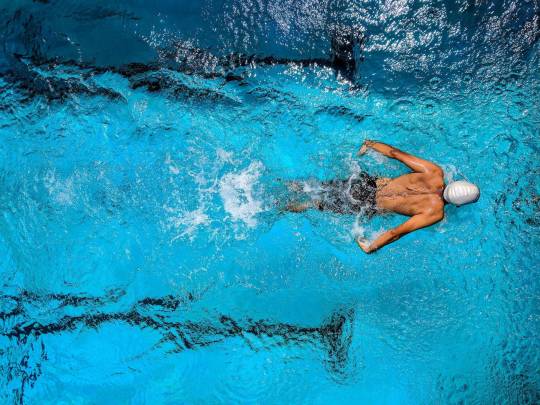
The Consequences of Inactivity and Excess Body Fat on Bones, Joints, and Muscles
Excess body fat has a significant impact on the skeletal system and its components, including bones, joints, and muscles. When an individual accumulates excessive fat, it puts added stress and strain on the bones, joints, and muscles, leading to numerous health problems. Over time, if this situation remains unchecked and without proper exercise, the problems will worsen, leading to more severe health issues.
Bones are the body's internal support structure, providing the framework for movement, protecting internal organs, and helping to store and release minerals essential for proper body functioning. When an individual has excessive body fat, the bones are subjected to added stress and pressure, which can lead to decreased bone density and increased risk of osteoporosis.
Osteoporosis is a condition in which bones become fragile and prone to fracture. Excessive body fat can increase the risk of osteoporosis because it adds weight to the bones and increases the stress they must bear. This added stress can weaken bones, making them more susceptible to fractures and other bone injuries.
Joints are the points at which two bones meet, and they are essential for providing the body with mobility and support. Excessive body fat places additional stress on joints, leading to increased risk of osteoarthritis. This condition is a degenerative joint disease that causes pain, stiffness, and limited movement.
Muscles are responsible for movement and play a crucial role in maintaining proper posture and balance. When an individual has excessive body fat, the muscles must work harder to support the additional weight, leading to muscle fatigue and weakness. Over time, this can result in decreased muscle mass and increased risk of injury.
Inactivity, combined with excess body fat, compounds the problem. A sedentary lifestyle, combined with a diet high in calories and low in physical activity, can cause significant weight gain, which puts even more stress on bones, joints, and muscles. Lack of physical activity can also result in decreased muscle mass, which can lead to weakened muscles and increased risk of injury.
How Regular And Proper Exercise Can Change Your Bones/Joints/Muscles Structures
Regular and proper exercise can have a profound impact on the structure of bones, joints, and muscles. Exercise is a crucial component of maintaining a healthy skeletal system and preventing numerous health problems that can arise from inactivity and a sedentary lifestyle.
Bones are the body's internal support structure and play a vital role in providing the framework for movement, protecting internal organs, and helping to store and release minerals essential for proper body functioning. Regular and proper exercise can help improve bone health and prevent conditions like osteoporosis.
Weight-bearing exercises, such as walking, jogging, and resistance training, can help to increase bone density and strengthen bones. These exercises put stress on bones, which signals the body to produce new bone tissue, making bones stronger and less susceptible to fractures and injuries. Resistance training, in particular, has been shown to be particularly effective in increasing bone density and preventing osteoporosis.
Joints are the points at which two bones meet and are essential for providing the body with mobility and support. Regular exercise can help to maintain joint health and prevent conditions like osteoarthritis.
Physical activity can improve joint health by increasing the production of synovial fluid, which lubricates joints and reduces the risk of joint wear and tear. Exercise can also help to maintain the strength of the muscles and tendons that support joints, reducing the risk of joint injury and improving joint stability.
Muscles are responsible for movement and play a crucial role in maintaining proper posture and balance. Regular exercise can help to improve muscle health and prevent conditions like muscle weakness and fatigue.
Physical activity can increase muscle strength, improve muscle endurance, and maintain muscle mass. Resistance training, in particular, has been shown to be effective in increasing muscle mass and strength. Regular exercise can also help to improve flexibility, reducing the risk of injury and improving overall physical performance.
Recommended Exercises For Weight Loss
There are several types of exercises that can be effective for weight loss, depending on an individual's goals, physical abilities, and preferences. Here are some recommended exercises for weight loss:
- Aerobic Exercise: Aerobic exercises, such as running, jogging, cycling, or swimming, can help to burn calories and improve cardiovascular fitness. Aim for at least 150 minutes of moderate-intensity aerobic exercise per week, or 75 minutes of vigorous-intensity aerobic exercise.
- Resistance Training: Resistance training, such as weightlifting or bodyweight exercises, can help to build muscle mass and increase metabolism, leading to greater weight loss over time. Incorporate resistance training into your fitness routine two to three times a week.
- High-Intensity Interval Training (HIIT): HIIT combines short periods of high-intensity exercise with periods of rest or low-intensity exercise. HIIT can be effective for weight loss because it burns a significant number of calories in a short amount of time and can help to improve metabolism.
- Yoga: Yoga can be an effective way to lose weight because it combines physical activity with mindfulness and stress reduction. Some styles of yoga, such as vinyasa or power yoga, can be especially effective for weight loss because they involve dynamic movements and increase the heart rate.
- Walking: Walking is a low-impact form of exercise that can be easily incorporated into your daily routine. Aim to walk for at least 30 minutes per day, and increase the intensity or duration of your walks as you progress.
It is important to find an exercise that you enjoy and can sustain over time. A combination of different types of exercise is often the most effective approach to weight loss, as it helps to prevent boredom and target different aspects of fitness. Additionally, it is important to consult with a doctor or physical therapist before starting a new exercise program, especially if you have any health concerns or pre-existing conditions.
Read the full article
#Aerobicexercise#Bones#Exercise#High-intensityintervaltraining(HIIT)#Joints#Muscles#ResistanceTraining#SkeletalSystem#Weightloss#Yoga
0 notes
Text
Suffer from cardiovascular disease – get rid of it with Medical News Today!
Cardiovascular disease is a heart disease that includes high cholesterol, high blood pressure, and more. You can prevent it and get rid of it with the help of a healthy diet including a cardiac diet, DASH diet, best AFIB diet, or exercise like walking, running, aerobic exercise, etc. For more information click here https://www.medicalnewstoday.com/cardiovascular-health!

#medicalnewstoday#health#medicalissue#cardiovasculardisease#heartdisease#cardiacmuscle#aerobicexercise#afibdiet#cardiacdiet#healthybody
1 note
·
View note
Text
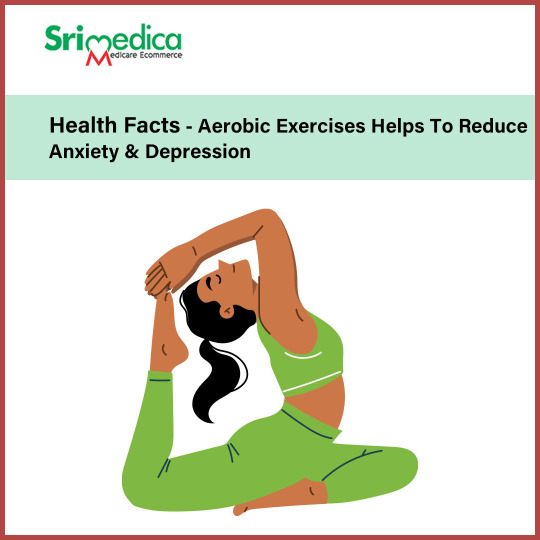
Health Facts
0 notes
Text
Go from obese to fit in no time with Tasha Ingram Fitness!
Tasha provides central park training to help you get in the most excellent shape of your life, regardless of your fitness level or experience. Tasha ensures a safe and challenging workout by combining resistance training, agility movements, aerobic exercises, and flexibility.
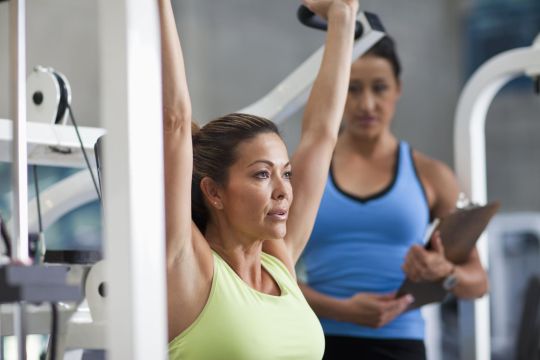
0 notes
Photo

Latest research reveals a hidden benefit of aerobic exercise: it's a brain booster! 🏃♀️🧠 Aerobic activities increase blood flow to the brain, enhancing the health of brain tissue. They also reduce the risk of brain damage caused by cholesterol buildup in blood vessels & high blood pressure. So, not only does your heart get a workout, but your brain reaps rewards too! #BrainHealth #AerobicExercise #Performance #Dementia #HealthyLiving #LongevityMedicine #FunctionalMedicine #TheRealGutDoctor
0 notes
Video
youtube
Do These Thing EVERY Morning - BURN 300 CALORIES | Eva Fitness 👉 Do These Thing EVERY Morning - BURN 300 CALORIES | Eva Fitness
#Aerobic #EvaFitness #MiraPham #FatLoss #BellyFat #AerobicWorkout #AerobicExercises
▬▬▬▬▬▬▬▬▬▬
⏳ 𝐋𝐈𝐊𝐄 & 𝐒𝐔𝐁𝐒𝐂𝐑𝐈𝐁𝐄:
👉 𝐒𝐔𝐁𝐒𝐂𝐑𝐈𝐁𝐄 :
[…]
https://newsinfitness.com/do-these-thing-every-morning-burn-300-calories-eva-fitness/
0 notes
Text
What Are The Benefits Of Cardiorespiratory Endurance?
What Are The Benefits Of Cardiorespiratory Endurance?
Cardiorespiratory endurance indicates overall physical health and has many benefits for improving oxygen uptake in the lungs and heart.
#Cardiorespiratoryendurance #cardiorespiratory #endurance #heart #lungs #muscles #respiratory #benefits #improvement #exercises #aerobicexercises #fitness #hearthealth #health #lifestyle #healthyheart
Cardiorespiratory endurance is an indication of the overall physical health of any person. ‘Cardiorespiratory endurance’ tests monitor how well the heart, lungs, and muscles are, and they perform during ‘moderate to high-intensity exercise. Cardiorespiratory endurance also has many benefits for us.
Increasing cardiorespiratory endurance is important as it improves oxygen uptake in the lungs and…

View On WordPress
#Benefits Of Cardiorespiratory Endurance#Cardiorespiratory Endurance#Cardiorespiratory Endurance Benefits#Heart Health#Improve Cardiorespiratory Endurance
0 notes
Photo
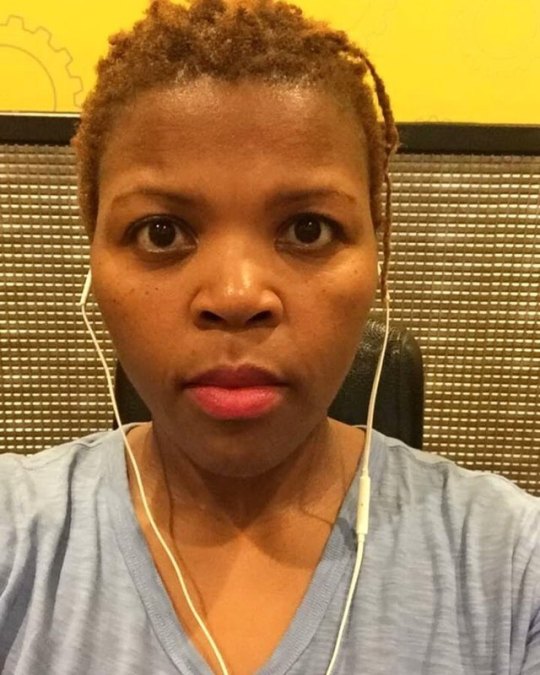
#GymSelfie doing what I don’t normally do, weights. I’m a very #aerobicexercise kind of girl. What about you? . . . . . . . . . #love and #happiness (at Alhambra, California) https://www.instagram.com/p/Bx1gTBSD9yk/?igshid=6mel8ymfyx87
1 note
·
View note
Text
The Key to Lasting Weight Loss: A Balanced Diet and Exercise
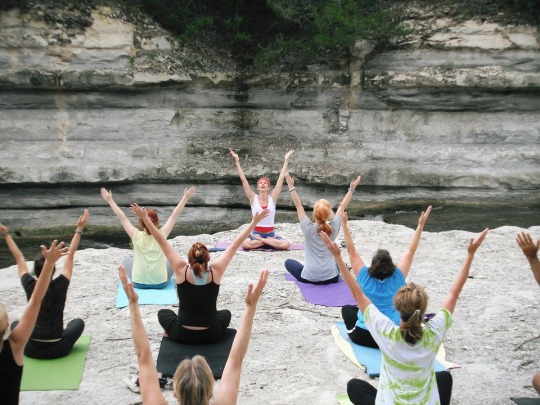
The Key to Lasting Weight Loss: A Balanced Diet and Exercise
Introduction
Losing weight can be a challenging task, but it's essential to take a balanced approach. While there are several fad diets and workout trends that promise quick results, the key to lasting weight loss is a combination of a balanced diet and exercise. In this article, we'll explore the benefits of a balanced diet and exercise for weight loss and provide practical tips to help you achieve your goals.
The Importance of a Balanced Diet
A balanced diet is crucial for maintaining a healthy weight. When you consume a diet that is high in processed foods and refined sugars, you are more likely to gain weight. These foods are often high in calories and low in essential nutrients, leaving you feeling hungry and unsatisfied.
Understanding Macronutrients
Macronutrients are the three essential nutrients that provide energy to the body: carbohydrates, proteins, and fats. A balanced diet should contain a healthy mix of all three macronutrients. Consuming too much of one macronutrient can lead to weight gain.
The Role of Fiber
Fiber is an essential component of a balanced diet. It helps keep you feeling full and satisfied, which can prevent overeating. Foods that are high in fiber, such as fruits, vegetables, and whole grains, should be a staple in your diet.
The Importance of Hydration
Drinking enough water is also crucial for weight loss. When you are dehydrated, your body may mistake thirst for hunger, leading you to overeat. Drinking water before meals can also help you consume fewer calories.
The Benefits of Exercise for Weight Loss
Exercise is just as important as a balanced diet for weight loss. When you exercise, you burn calories and build muscle, which can help increase your metabolism.
The Role of Cardiovascular Exercise
Cardiovascular exercise, such as running, swimming, or cycling, is excellent for burning calories and improving heart health. Aim for at least 150 minutes of moderate-intensity exercise per week to reap the benefits.
The Importance of Strength Training
Strength training, such as weightlifting or bodyweight exercises, is also essential for weight loss. When you build muscle, your body burns more calories at rest, helping you lose weight even when you're not exercising.
Practical Tips for Lasting Weight Loss
To achieve lasting weight loss, you need to make sustainable lifestyle changes. Here are some practical tips to help you get started:
Set Realistic Goals
Setting realistic goals can help you stay motivated and track your progress. Aim to lose 1-2 pounds per week, which is a healthy and sustainable rate of weight loss.
Keep a Food Diary
Keeping a food diary can help you track your calorie intake and identify areas where you can make healthier choices. There are several apps and websites that can help you track your food intake, making it easier to stay on track.
Find an Exercise Routine You Enjoy
Exercise shouldn't feel like a chore. Find an exercise routine that you enjoy, whether it's dancing, yoga, or weightlifting. When you enjoy your workout, you're more likely to stick with it.
Get Support
Getting support from friends, family, or a support group can make a significant difference in your weight loss journey. Having someone to hold you accountable and celebrate your successes can help you stay motivated.
Conclusion
A balanced diet and exercise are the keys to lasting weight loss. By consuming a healthy mix of macronutrients, increasing your fiber intake, staying hydrated, and engaging in regular exercise, you can achieve your weight loss goals. Remember to set realistic goals, track your progress, and find a routine that you enjoy. With dedication and consistency, you can achieve lasting weight loss and a healthy lifestyle.
FAQs
- What is a balanced diet? A balanced diet is one that includes a variety of nutrient-dense foods from all food groups in appropriate proportions.
- Can I lose weight without exercise? While it's possible to lose weight without exercise, incorporating physical activity into your routine can make weight loss more sustainable and improve overall health.
- How much water should I drink per day? The recommended daily intake of water varies depending on several factors, including age, sex, and activity level. However, a general guideline is to drink at least eight 8-ounce glasses of water per day.
- How often should I exercise? The American Heart Association recommends at least 150 minutes of moderate-intensity exercise or 75 minutes of vigorous-intensity exercise per week.
- What should I do if I hit a weight loss plateau? If you hit a weight loss plateau, try changing up your exercise routine or adjusting your calorie intake. Consult a healthcare professional if you're struggling to break through the plateau.
Read the full article
#AerobicExercise#BMI#Calories#Carbohydrates#cardio#Fat#Fiber#HealthyEating#High-IntensityIntervalTraining(HIIT)#Macronutrients#MealPlanning#Metabolism#Mindfulness#Nutrition#PhysicalActivity#PortionControl#protein#ResistanceTraining#Self-Discipline#Sleep#StressManagement#WaterIntake#WeightManagement.#Willpower
0 notes